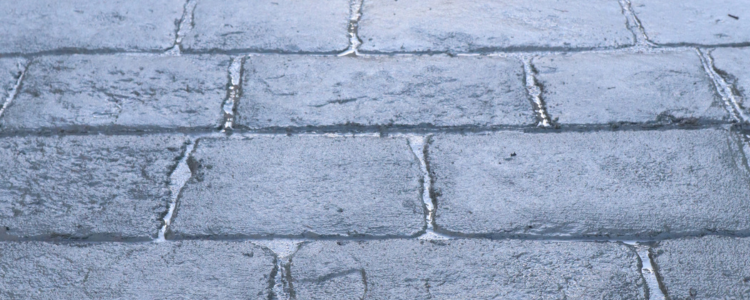Winter can be a tough season for your concrete surfaces. The freezing temperatures, ice, snow, and harsh chemicals used for deicing can all contribute to wear and tear. However, with a little extra care and attention, you can help ensure that your concrete remains in great condition throughout the cold months and for years to come.
Here’s a guide to winter maintenance for concrete:
1. Understand How Cold Affects Concrete
Concrete is a durable and resilient material, but it’s not immune to damage from the elements. When temperatures drop below freezing, the water trapped inside the concrete can freeze, expand, and lead to cracking. This is particularly common with newer concrete surfaces that haven’t fully cured yet, as they are more porous and absorb more moisture.
The freeze-thaw cycle is one of the main causes of concrete deterioration in winter. As ice forms, it can cause small cracks, and when those cracks expand and contract repeatedly, they can cause significant damage over time.
Concerned about cracks in your concrete? Call us at 615-238-5909 for an inspection before winter sets in!
2. Seal Your Concrete
One of the most effective ways to protect your concrete surfaces is by applying a high-quality concrete sealer. Sealing your concrete forms a protective barrier that helps prevent moisture from penetrating the surface. This will reduce the risk of water freezing inside the concrete and causing cracks. It will also provide a shield against deicing salts and other harmful chemicals.
Need your concrete professionally sealed? Get in touch with The Milliken Corporation for expert sealing services — call 615-238-5909 today!
3. Shovel Snow Regularly
While it may seem like a simple task, regularly removing snow from concrete surfaces is one of the best ways to protect them. Snow buildup can trap moisture against the surface, which, when frozen, increases the risk of cracking. By clearing snow promptly, you can reduce the time moisture stays in contact with your concrete.
Want to ensure your concrete stays protected all winter? Let our team help — contact us for expert winter maintenance solutions!
4. Use Safe Ice Melt Products
Deicing salts and chemicals can be extremely harsh on concrete, causing surface damage, discoloration, and even internal deterioration. While deicers are effective at melting ice and snow, it’s essential to choose products that are concrete-friendly.
Not sure which deicers are safe for your concrete? Ask our experts — call 615-238-5909 for professional advice!
5. Repair Cracks Before Winter Sets In
If your concrete surfaces have existing cracks, it’s essential to address them before winter arrives. Left untreated, these cracks can worsen during the freeze-thaw cycle, leading to more extensive damage. Properly repairing cracks before winter will help keep your concrete in better condition and prevent further degradation.
Don’t wait until it’s too late — schedule your concrete repairs with The Milliken Corporation today! Call 615-238-5909 or request a quote on our website.
6. Consider Concrete Resurfacing
If your concrete surfaces are significantly damaged or worn out, resurfacing them can be an effective way to restore their appearance and durability. Resurfacing involves applying a thin layer of fresh concrete over the old surface, giving it a smooth, uniform finish.
Resurfacing can also be a preventive measure, as it will help to seal the concrete and protect it from the winter elements. However, resurfacing should be done during a time when temperatures are consistently above freezing to allow proper curing.
Interested in resurfacing your concrete? Contact The Milliken Corporation for a consultation today!
7. Regularly Inspect Your Concrete
Throughout the winter months, it’s important to check your concrete surfaces for signs of damage. Look for cracks, discoloration, and areas where the surface may be deteriorating. Early detection can save you from dealing with more significant, expensive repairs later on.
Need a professional inspection? Call 615-238-5909 to schedule a winter concrete assessment!
8. Avoid Trafficking Concrete When It’s Frozen
Concrete should not be subjected to heavy loads when it is frozen or near freezing temperatures. Doing so can cause cracking or significant damage. If possible, try to limit heavy traffic on concrete surfaces during the coldest months of the year. If the concrete is freshly poured, avoid any foot or vehicle traffic until it has had ample time to cure and set.
Planning a new concrete installation? Let The Milliken Corporation ensure it’s done right — call us today for expert concrete services!
Conclusion
Winter can be rough on your concrete surfaces, but with the right maintenance routine, you can help extend the lifespan and keep your concrete looking great. Seal your concrete, remove snow regularly, use safe deicers, repair cracks, and monitor the condition of your surfaces to ensure they stay in the best possible shape throughout the season. By taking the time to protect and care for your concrete, you’ll prevent costly repairs down the road and maintain the durability of your surfaces for many years to come.
For expert concrete maintenance, repairs, and resurfacing, trust The Milliken Corporation. Call us at 615-238-5909 or fill out a proposal form on our website today!

